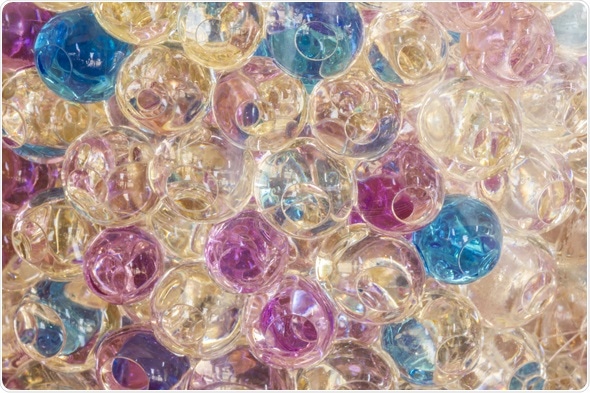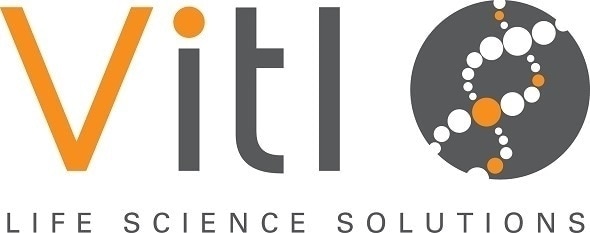Drug delivery systems
Drug delivery systems are technologies used to ensure the safe and effective transport of a drug around the body and its release at the desired site of action. They incorporate a range of approaches and methodologies designed to modify the drug distribution and availability in order to optimize a drug's efficacy and safety profile.
Drugs with greater efficacy or better tolerability are constantly being developed as technologies become more and more advanced. However, despite such progress, the use of many potential therapeutic agents is limited by them either having a short duration of action in vivo or damaging healthy tissues en route to the disease site, causing unacceptable side effects.
For example, highly toxic compounds are often needed to destroy cancer cells, yet they can also have devastating effects on the rest of the body. In addition, the effectiveness of chemotherapy is highly dependent on drug availability at the target site, so it is important that the correct amount of drug reaches the cancer cells.
Various drug delivery options have been investigated with the aim of overcoming drug toxicity limitations whilst ensuring consistently adequate bioavailability1. For example, drug-encapsulating systems have been used, but these have limitations regarding the nature and size of drug that can be transported and released effectively.
Furthermore, drug release is dependent on the degradation of the capsule, which can result in a sudden burst of drug availability rather than a steady, constant release.
One of the most recent developments in drug delivery systems is hydrogels, which appear to satisfy many of the challenging drug delivery requirements of medicine today, and in particular chemotherapy.

© thirayut / Shutterstock.com
What are hydrogels?
Hydrogels are porous polymers that are insoluble in water under physiological conditions. They can swell considerably in water with the water trapped within the network structure increasing their capacity by more than 20%2.
Hydrogels can be prepared from natural and synthetic biocompatible materials and, by using different preparation methods, can be designed to have specific physicochemical properties, e.g., biodegradability2,3.
The linkers used to attach the drug to the hydrogel can be selected according to the required drug release profile. Tethering more than one drug to a hydrogel using different, individually tuned, linkers for each drug can allow different drugs in a chemotherapy cocktail to be released at different rates2.
Hydrogel composition can also be tailored to make them sensitive to different environmental conditions, such as: temperature, pH, and enzymatic activities4.
The large pore size allows the transported drug to readily diffuse out over a few hours to a few days, depending on the gel composition. The hydrogel remains stable for the entire duration of drug release, preventing a sudden burst of drug deposition, degrading only after its task is complete2.
Hydrogels are thus becoming an increasingly valuable tool in chemotherapy5.
Hydrogel preparation
A great variety of approaches have been developed to prepare hydrogels, each specifically designed for a particular application. Since the properties of hydrogel are determined by the composition and production conditions, it is important that their preparation is strictly controlled so that they fulfill their particular purpose.
Precision during their production is particularly critical for drug delivery hydrogels, where the composition and precise cross-linking structure can directly impact drug efficacy and patient safety.
With hydrogel synthesis involving a series of heating and mixing steps, using different polymeric supports and varying temperatures, it can be challenging to ensure that all variables are exactly as required to reproduce a hydrogel of the precise composition and structure that is required.
Vitl Life Science Solutions have developed an instrument that can ensure a specific hydrogel can be replicated with confidence. Ther-Mix™, which incorporates a heated block and mixing tubes, obviates the need for incubators, mixers, shakers and stopwatches and removes the uncertainty about achieving precisely the desired hydrogel.
How Giorgia uses the Ther-Mix for Nanoparticle Synthesis
Ther-Mix™ allows up to one hundred mixing programs to be stored, each including multiple mixing and heating steps. Once programmed, Ther-Mix™ will produce a specific hydrogel at the press of a button.
Dr Gubala, lecturer in Chemistry and Drug Delivery at the Medway School of Pharmacy, uses Ther-Mix™ in his work with hydrogels. He explained:
The Ther-Mix™ allows us to mix the reagents in various ratios, thus creating hydrogels with different properties. We can study up to 24 hydrogels at the same time, whilst ensuring that other variables such as shaking speed and temperature are precisely controlled by the Ther-Mix™".
Summary
The delivery of drugs to a precise location at the desired concentration without causing toxic effects to the rest of the body has been a challenge to biomedical science for many years. Although several approaches have been investigated, each has its limitations.
Hydrogels appear to have overcome many of the barriers to optimal drug delivery and have proved particularly valuable in the delivery of toxic chemotherapy agents. The properties of a hydrogel can be controlled by altering its composition, so that the location, timing and duration of drug release can be tailored to meet a specific need.
Once the desired hydrogel has been developed to meet a specific drug delivery requirement, it is important that it can be replicated precisely. The development of Ther-Mix™, which can be programmed to perform a series of heating and mixing steps, has enabled the accurate reproduction of a specific hydrogel.
References
- Tiwari G, Tiwari R, Sriwastawa B et al. Drug delivery systems: An updated review. Int J Pharm Investig. 2012;2(1):2–11.
- Ashley GW, Henise J, Reid R, et al. Hydrogel drug delivery system with predictable and tunable drug release and degradation rates. Proc Natl Acad Sci USA 2013;110(6):2318–2323.
- McKenzie M, Betts D, Suh A, et al. Hydrogel-Based Drug Delivery Systems for Poorly Water-Soluble Drugs. Molecules 2015, 20, 20397–20408.
- Singh, N.K.; Lee, D.S. In situ gelling pH- and temperature-sensitive biodegradable block copolymer hydrogels for drug delivery. J. Control Release 2014, 193, 214–227.
- Cassano R, Mellace S, Pellegrino M, et al. Biocompatible Targeting Hydrogels For Breast Cancer Treatment. Mini Rev Med Chem. 2016;16(8):651‑657.
- http://www.vitlproducts.com/
About Vitl Life Science Solutions

Vitl designs, manufactures and sells high quality laboratory instruments to compete with market leaders at an affordable price with unrivalled functionality, usability and style.
The growing Vitl laboratory products range includes the world’s best-selling microplate heat sealer- the VTS and its compact counterpart the MicroTS. Vitl also sell a range of foil and film heat seals as well as microtube pickers and programmable mixers and vortexers.
Vitl products was established in 2006 by the medical, diagnostic and analytical device design and manufacturing company Integrated Technologies Ltd.
As a member of the ITL group, Vitl benefits from the experience and expertise of a parent company that works with globally successful medical devices and laboratory instrumentation.
Vitl products are sold through a global network of distributors and OEM (private label) partners, managed by their main sales offices in the UK, USA and China.
Sponsored Content Policy: News-Medical.net publishes articles and related content that may be derived from sources where we have existing commercial relationships, provided such content adds value to the core editorial ethos of News-Medical.Net which is to educate and inform site visitors interested in medical research, science, medical devices and treatments.